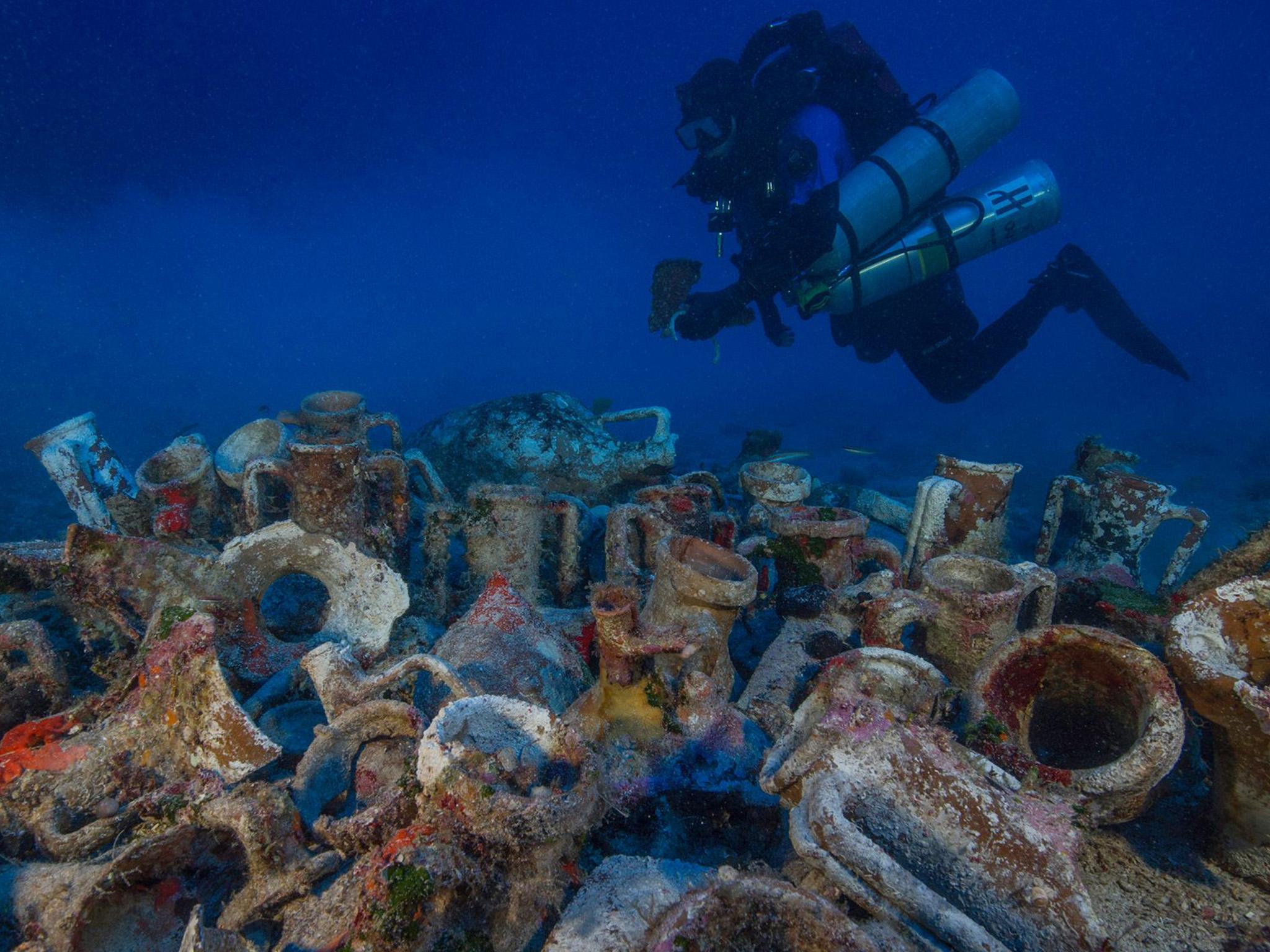Human skeleton discovery could reveal secrets of 'world's most mysterious shipwreck'
Mysterious Antikythera wreck continues to baffle scientists over a century after discovery

A skeleton discovered off the coast of Greece could be the key to revealing the secrets of the world’s most mysterious shipwreck, scientists believe.
The remains were found near the island of Antikythera, a 2,000-year-old site which has been the subject of numerous salvage operations since its discovery by divers in 1900.
The wreck has yielded numerous items of interest, including statues, pottery, jewellery and the remains of a device researchers regard as the world’s oldest known analogue computer - the Antikythera mechanism.
A team of archaeologists from the Hellenic Ministry of Culture and Woods Hole Oceanographic Institution (WHOI) recovered the bones, which will be analysed for their DNA and could reveal the identity of a victim of the ancient wreck.
Scientists have named the individual ‘Pamphilos’, meaning “friend of all” in Greek, and estimate he would have been a man in his early 20s at the time of the incident, as his ship sailed from Asia Minor to Rome.
The bones have been severely discoloured with age and were found mixed up in the sediment with broken artifacts around them, according to CNN, and scientists believe there may be more buried on the seabed.
“We are getting these glimpses back to one of the most interesting periods in human history. This moment when the Roman Republic is switching over to the Roman Empire - really one of the first periods of globalization,” said expedition co-director Brendan Foley.
“Steady labor at the site over the last four years has now gotten us to the point where almost every dive is delivering something that is just jaw-dropping.
DNA analysis will allow the researchers to reveal Pamphilos’ facial appearance as well as his ancestry and ethnicity.
“I bet you there is going to be more”, Foley continued. “The area where we were excavating, which we are fairly certain is the stern of the ship where the galley was, is probably where crew and passenger compartments were located.
“So if that's truly the case we're going to get personal possessions and we'll probably get more human remains.”
In June it was revealed the Antikythera Mechanism may have been used to predict the future, after scientists analysed the inscriptions on the dial.
All known fragments of the Antikythera Mechanism are currently held for research at the National Archaeological Museum in Athens.
Join our commenting forum
Join thought-provoking conversations, follow other Independent readers and see their replies
Comments